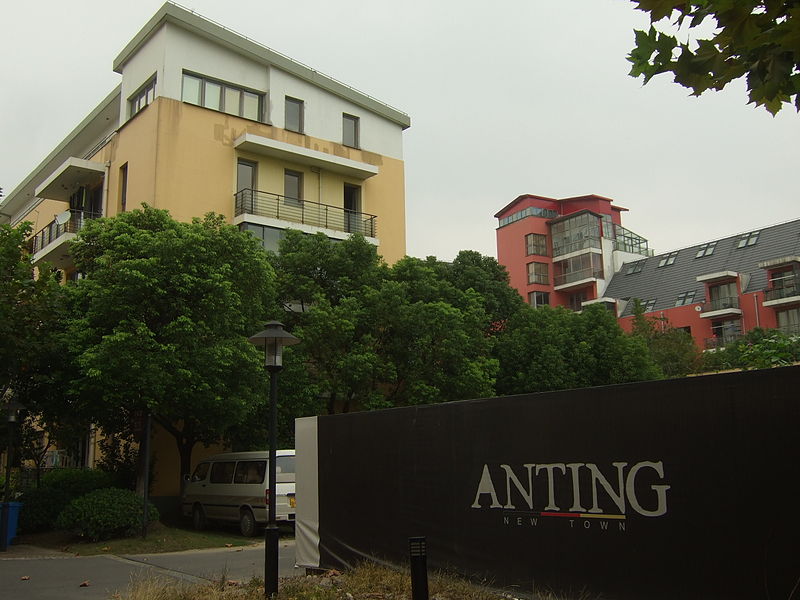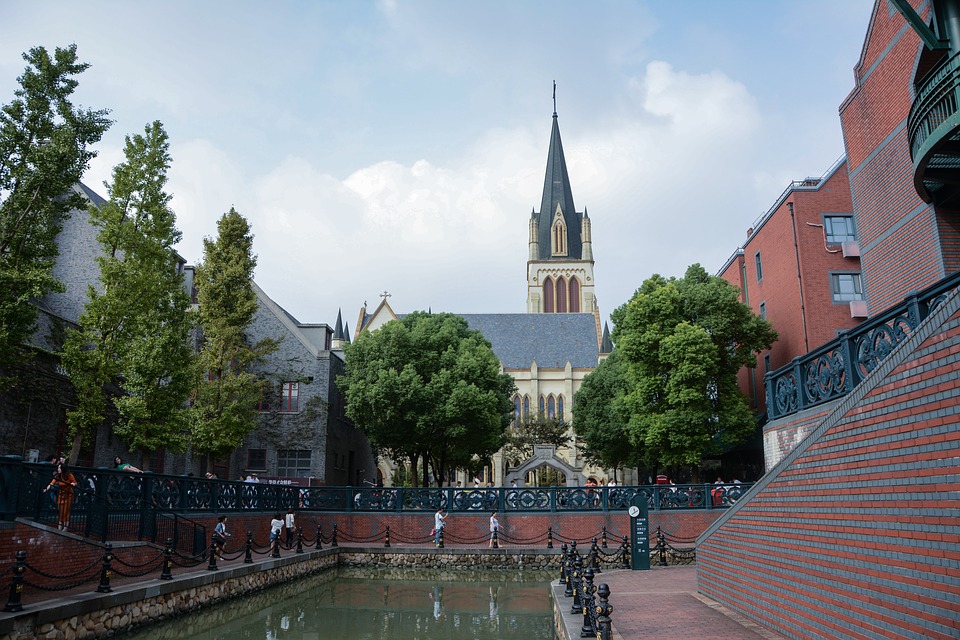Shanghai's One City Nine Towns
Contents |
[edit] Introduction
The One City Nine Town concept was an economic development plan introduced by the Shanghai Planning Commission in 2001. Planning was essentially completed in 2007.
The purpose of One City Nine Towns was to relieve the overcrowding of the overdeveloped city centre and prevent urban sprawl around Shanghai. It was intended to provide a combination of housing, education and commercial investment opportunities in 10 satellite New Towns built on the farmland outside the city. Each town was planned and built in the style of a different Western city, incorporating European and North American architectural styles as a method of attracting investors and residents.
In the article, Localizing the Production of Global Cities: A Comparison of New Town Developments Around Shanghai and Kolkata, the concept was explained as "...a strategy to attract both foreigners working in the firms and Chinese people who cherish the Western lifestyle who are usually living in the downtown area. The 10 new towns were designated to follow certain places in nine foreign countries including the United Kingdom, Germany, Italy, Sweden, the United States, France, Spain, Australia, and Netherlands, with only one of them being restored as a traditional Chinese water town."
Despite the ambitious plans, the One City Nine Town concept has not generally been successful. Contributing factors include:
- Price.
- Remote location/inaccessibility.
- Cultural disconnection.
- Lack of useful public space.
[edit] The city
Thames Town is the one medium-sized city of the project. Located in the Songjiang New City, the English themed city for 10,000 residents was planned by the architectural firm Atkins and completed in 2006. Its duplitecture style includes mock Tudor buildings, red telephone boxes, English pub, statues of Churchill, Shakespeare, James Bond and so on.
|
Thames Town in Songjiang was the most ambitious of the developments. |
Thames Town consists primarily of expensive single family residential properties. The city also includes the Songjiang University District (including the campuses of seven universities) as well as manufacturing/industrial zones. There are also tourism areas that have been designated as scenic spots.
The homes were primarily sold to wealthy investors, which continued to push prices upwards. As the homes became even more unaffordable, the number of permanent residents decreased. This forced many of the shops and restaurants to close. By 2016, the majority of businesses were empty and many of the homes were unoccupied once the novelty of the city faded. However, Thames Town is still relatively popular as a tourist attraction and for backdrops to photoshoots - particularly for weddings.
[edit] The towns
The plan for the Nine Towns of Shanghai was influenced by Ebenezer Howard’s Garden Cities, which had been designed to control the rapidly increasing urban sprawl that was occurring in the UK in the early 1900s. In both instances, the towns were planned as self sufficient communities. In Shanghai, the towns offered incentives to attract thematic businesses to support the authenticity of the reproduction.
Of the nine towns planned, the core of only six were built:
- Scandinavian town (Luodian). This new town in the Baoshan District was designed by Swedish architects Sweco. It includes an artificial lake, a PGA golf club on the European tour and an unused church.The central part of the town was completed in 2004, but the plans have since halted.
- Italy town (Pujiang). This new town in the Minhang District was planned by Italian architects Gregotti Associati. It was designed in a style that mimics the garden villas of Venice, and includes a piazza, bell tower and palace. The town includes an industrial park and the Shanghai National Civil Aerospace Industrial Base. New residential buildings are generally vacant.
- Spanish town (Fengcheng). Constructed on remote farmland outside of Shanghai, Spanish town is more like a traditional Chinese town than its counterparts. There are superficial Spanish architectural elements, but overall, the housing is like typical Chinese housing blocks. This town has better occupancy and residential construction continues. Commercial development has been less successful.
- Canada town (Fengjing). This new town in the Jinshan District of Shanghai was designed in 2004 by the Canadian architectural firm, Six Degrees Architecture and Design. The plan included landscaping and infrastructure, but the town was never completed.
- Dutch town (Gaoqiao). This new town is located in the Pudong New Area of Shanghai. It was jointly designed by Dutch architectural firms Kuiper Compagnons and Atelier Dutch. The town features traditional Dutch architectural elements (like a windmill) as well as duplitecture of landmark structures as well as a portion of the picturesque town of Amersfoort. The town is only partially completed and is relatively empty.
- German town (Anting). This new town is located in Shanghai’s Jiading District. It is the location of Shanghai Volkswagen, a German-Chinese venture in Shanghai International Automobile City (SIAC). In addition to the manufacturing facilities, the town has various luxury amenities including a Formula 1 racetrack and other features designed to attract high level employees from the automotive industry as well as young professionals from downtown Shanghai. Anting was designed by Albert Speer Jr. (son of Nazi architect Albert Speer) and features Bauhaus-style architecture of Weimar, Germany. It was meant to provide housing for 50,000 residents but many of its homes are vacant.
[edit] Related articles on Designing Buildings
[edit] External resources
Featured articles and news
One of the most impressive Victorian architects. Book review.
RTPI leader to become new CIOB Chief Executive Officer
Dr Victoria Hills MRTPI, FICE to take over after Caroline Gumble’s departure.
Social and affordable housing, a long term plan for delivery
The “Delivering a Decade of Renewal for Social and Affordable Housing” strategy sets out future path.
A change to adoptive architecture
Effects of global weather warming on architectural detailing, material choice and human interaction.
The proposed publicly owned and backed subsidiary of Homes England, to facilitate new homes.
How big is the problem and what can we do to mitigate the effects?
Overheating guidance and tools for building designers
A number of cool guides to help with the heat.
The UK's Modern Industrial Strategy: A 10 year plan
Previous consultation criticism, current key elements and general support with some persisting reservations.
Building Safety Regulator reforms
New roles, new staff and a new fast track service pave the way for a single construction regulator.
Architectural Technologist CPDs and Communications
CIAT CPD… and how you can do it!
Cooling centres and cool spaces
Managing extreme heat in cities by directing the public to places for heat stress relief and water sources.
Winter gardens: A brief history and warm variations
Extending the season with glass in different forms and terms.
Restoring Great Yarmouth's Winter Gardens
Transforming one of the least sustainable constructions imaginable.
Construction Skills Mission Board launch sector drive
Newly formed government and industry collaboration set strategy for recruiting an additional 100,000 construction workers a year.
New Architects Code comes into effect in September 2025
ARB Architects Code of Conduct and Practice available with ongoing consultation regarding guidance.
Welsh Skills Body (Medr) launches ambitious plan
The new skills body brings together funding and regulation of tertiary education and research for the devolved nation.
Paul Gandy FCIOB announced as next CIOB President
Former Tilbury Douglas CEO takes helm.
























